- Home
- Florida History
- Florida Heritage Sites
- University of Florida History
UNIVERSITY OF FLORIDA HISTORY
University of Florida History By Mike Miller Updated December 14, 2024
University of Florida history begins more than 150 years ago. It is a public research university located in Gainesville, Florida. It’s one of the big names in the State University System of Florida and has been around in some form since 1853.
The Gainesville campus, where the university still operates today, has been its home since 1906.
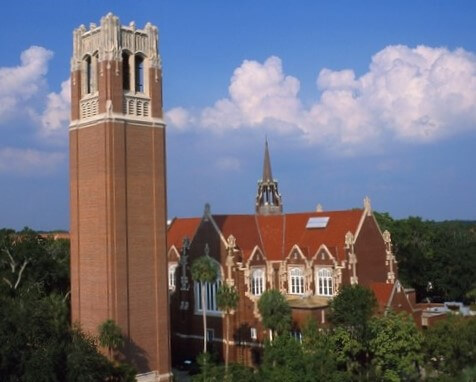 Century Tower at the University of Florida
Century Tower at the University of FloridaThe Origins of the University of Florida
The modern University of Florida (UF) can trace its roots back to the East Florida Seminary, which was re-established in Gainesville in 1866. The Seminary is considered the direct ancestor of UF.
One of UF's first buildings, Buckman Hall, was completed in 1906, just after the university was officially established under the Buckman Act in 1905.
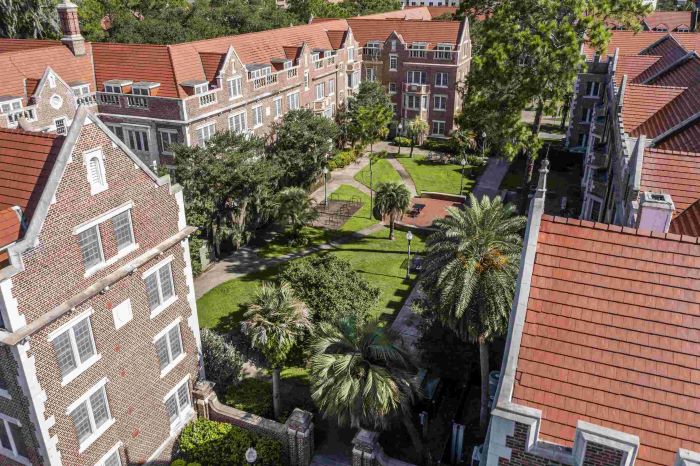 Buckman Hall, University of Florida
Buckman Hall, University of FloridaThe Buckman Act and the University of Florida History
The story of UF begins in 1853 when the East Florida Seminary was founded in Ocala, making it Florida’s first state-supported institution of higher learning.
The seminary had to shut its doors when the Civil War broke out in 1861 but reopened in 1866 on the grounds of the old Gainesville Academy.
The second piece of the University of Florida history comes from the Florida Agricultural College (FAC), which was established in 1884 in Lake City. It was Florida’s first land-grant college under the Morrill Act.
The Florida Legislature decided to expand the curriculum beyond agriculture and engineering, and for the 1903–1904 academic year, the school briefly took on the name "University of Florida."
In 1905, the Florida Legislature passed the Buckman Act, which basically reorganized all the state’s public higher education institutions.
Florida’s six public schools were merged, creating the State University System of Florida, overseen by the Florida Board of Control.
Four of these schools came together to form what was then called the "University of the State of Florida."
These included the University of Florida at Lake City, the East Florida Seminary, St. Petersburg Normal and Industrial School, and South Florida Military College in Bartow.
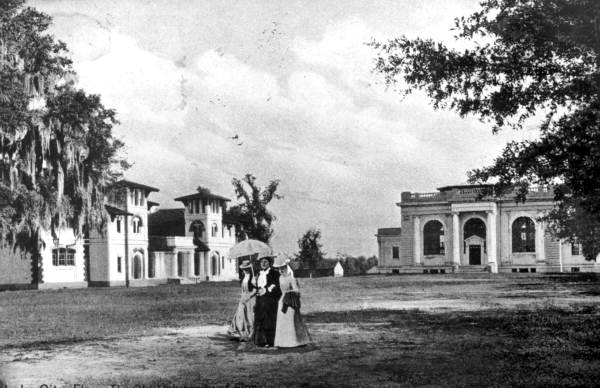 University of Florida Lake City
University of Florida Lake CityThe Buckman Act also created two separate institutions based on gender and race. The Florida Female College (now Florida State University) was created for white women, while the State Normal School for Colored Students (now Florida A&M University) was established for African-American men and women.
Gainesville, thanks to the efforts of Mayor William Reuben Thomas, won out as the new home for the university over Lake City in a heated lobbying campaign.
The Board of Control decided on Gainesville in 1905, but while the new campus was being built, the university temporarily held classes at the old FAC campus in Lake City.
University of Florida History: Early Years and Growth
The University of the State of Florida officially opened its doors in Gainesville in September 1906 with just 102 students.
Buckman Hall and Thomas Hall were the first two buildings, both named after people who played major roles in the University of Florida history.
The buildings, designed in the Collegiate Gothic style, set the tone for the architectural style still prominent on campus today.
The university’s first president, Andrew Sledd, ran into some conflicts with the Board of Control over his strict admission requirements, which they felt were keeping enrollment numbers too low.
Sledd eventually resigned in 1909, and Dr. A. A. Murphree, president of Florida State College for Women, became UF’s second president.
Mascots and Colleges
Murphree made a lot of big changes. He reorganized the university and established key colleges like law, engineering, and liberal arts and sciences.
Under his leadership, enrollment grew from under 200 students to over 2,000, and he also helped found the Florida Blue Key leadership society.
He’s the only president in the history of the University of Florida to have a statue on campus in his honor.
Around this time, the school adopted the alligator as its informal mascot. A local vendor had made and sold school pennants featuring a gator, a fitting choice given how common these creatures are in the Gainesville area and across Florida.
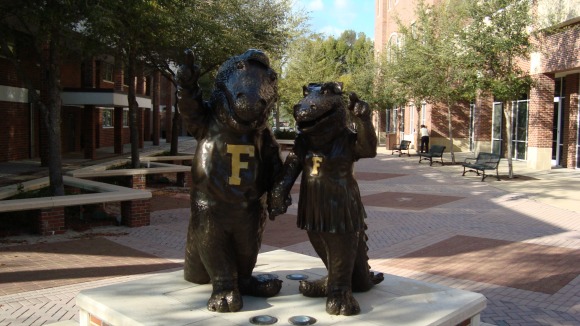 Albert and Alberta, Gator Mascots
Albert and Alberta, Gator MascotsBy 1911, the ‘gator was the official mascot.
That same year, the school colors of orange and blue were also formally established, most likely as a blend of the colors from UF’s two largest predecessor schools: orange and black from the East Florida Seminary and blue and white from Florida Agricultural College.
Women and New Academic Opportunities
In 1924, Florida’s legislature allowed women over 21 who had completed 60 semester hours to enroll at UF during regular semesters, though only if the programs they wanted weren’t offered at the Florida State College for Women.
Lassie Goodbread-Black was the first woman to enroll at UF, joining the College of Agriculture in 1925. Before this, UF was coeducational only during summer semesters to accommodate women teachers seeking further education.
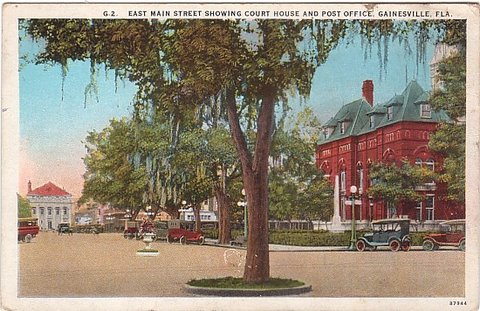 Vintage Postcard Gainesville
Vintage Postcard GainesvillePost World War II Boom
After World War II, UF saw a massive surge in male students, many of whom were veterans attending under the GI Bill.
A large number of veterans were married and had small children, so the University brought in old Army barracks from nearby Camp Blanding. These became known as Flavet Villages.
My wife, daughter, and I lived in these during my years as a student in Gainesville from1963 to 1966. No air conditioning, $28/month, $5 extra/month for refrigerator.
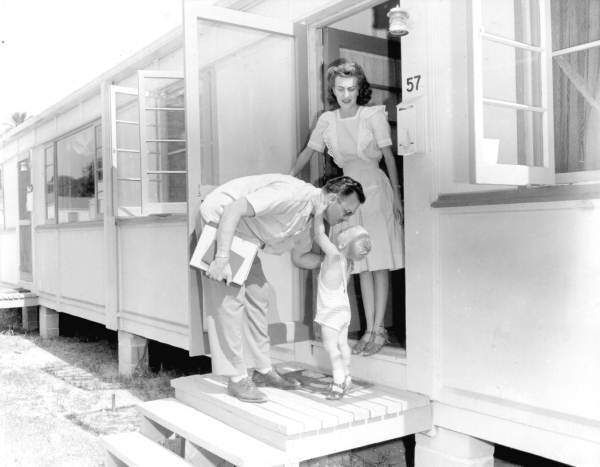 Flavet Family at Door
Flavet Family at DoorWith too many students to handle at once, the university temporarily opened a branch in Tallahassee, which later became Florida State University when the state decided to make Florida State College for Women coeducational again.
This also opened the doors for women to attend UF during the regular semesters.
The rapid growth continued through the 1950s. Shands Teaching Hospital and the College of Medicine opened in 1958, joining UF’s already established College of Pharmacy.
From its inception until 1958, only white students were allowed to attend the University of Florida. In 1958, George H. Starke became the first Black student.
Integration proceeded more quickly in the 1960s with the admission of many more black students including the first black athletes.
 Alligator at Night
Alligator at NightThe Preeminent Status
In 1985, the University of Florida was invited to join the Association of American Universities.
UF has grown into one of Florida’s "preeminent universities," a designation that came in 2013 thanks to Senate Bill 1076. This prestigious status has allowed UF to receive extra funding to boost its academics and national reputation as a leading public university.
In 2013, Florida’s state legislature put performance standards in place, and the Florida Board of Governors gave UF the title of a "preeminent university."
This status makes UF one of the top three universities in Florida that are part of the prestigious Association of American Universities (AAU).
On top of that, UF is classified as an R1 university, meaning it’s recognized for its very high level of research activity.
UF is accredited by the Southern Association of Colleges and Schools (SACS), and it ranks as the third-largest university in Florida based on the student population.
It’s also the fifth largest single-campus university in the U.S., with a total enrollent of 54,800 students in 2023.
The university boasts 16 academic colleges and more than 150 research centers and institutes.
On its Gainesville campus, UF offers a wide range of professional graduate programs, including business administration, engineering, law, medicine, pharmacy, dentistry, veterinary medicine, and other professional degrees.
In total, there are 123 master’s programs and 76 doctoral programs available across 87 schools and departments as well as many undergraduate degrees.
During President Bernie Machen's tenure and with the backing of the University of Florida Board of Trustees, a significant policy shift was announced in 2009 for the university.
This shift involved reducing the number of undergraduate students and reallocating financial and academic resources toward graduate education and research initiatives.
A notable milestone in the University of Florida history was in 2017 when UF became the first university in the state of Florida to rank among the top ten best public universities in the United States by U.S. News and World Report.
In the 2024 fiscal year, the University of Florida received more than $1.26 billion in annual sponsored research expenditures.
In 2017, University President Kent Fuchs unveiled a strategic plan to recruit 500 new faculty members to elevate the university's ranking among the top five best public universities.
The majority of these new hires are concentrated in STEM fields. In 2018, 230 faculty members were hired, with the remaining 270 faculty positions expected to be filled by 2019.
UF Athletics – The Florida Gators
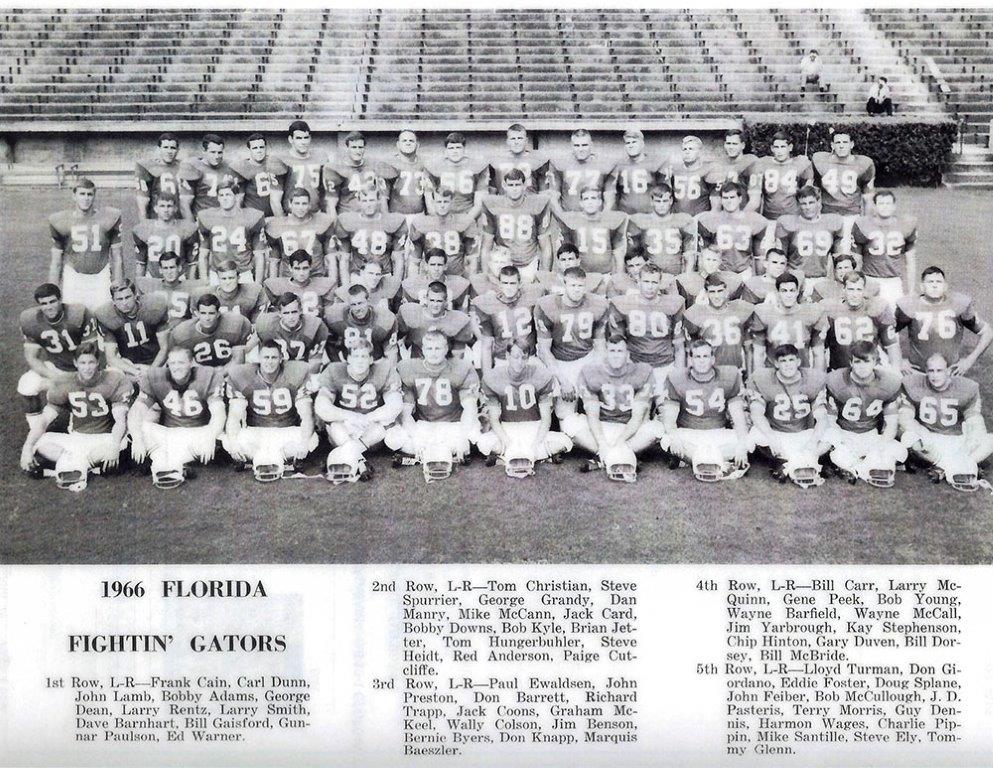 Florida Gator Football Team Photo
Florida Gator Football Team PhotoWhen it comes to sports, UF’s teams are known as the Florida Gators. They compete at the highest level in the National Collegiate Athletic Association (NCAA) Division I and are part of the Southeastern Conference (SEC).
The Gators have a proud history in athletics, and as of 2021, UF students and alumni have won 143 Olympic medals, including 69 gold ones!
They have also won a national title in both football and basketball as well as many Southeastern Conference championships in multiple sports.
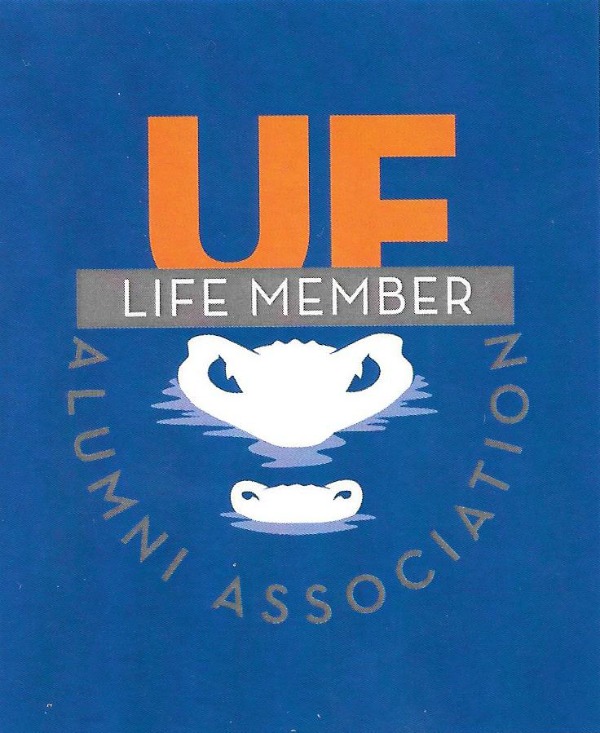 Mike Miller is a Proud Gator
Mike Miller is a Proud Gator
Florida is the fastest-growing state in the United States and also the fastest-changing. If you see anything in this article that has changed or is in error, please let me know.
Thousands of Florida fans subscribe to our free daily Ezine, Florida Heritage Travel and we have 130,000 followers on Facebook.
By Mike Miller, Copyright 2009-2026
Florida-Back-Roads-Travel.com
Florida Back Roads Travel is not affiliated with or endorsed by Backroads, a California-based tour operator which arranges and conducts travel programs throughout the world.
